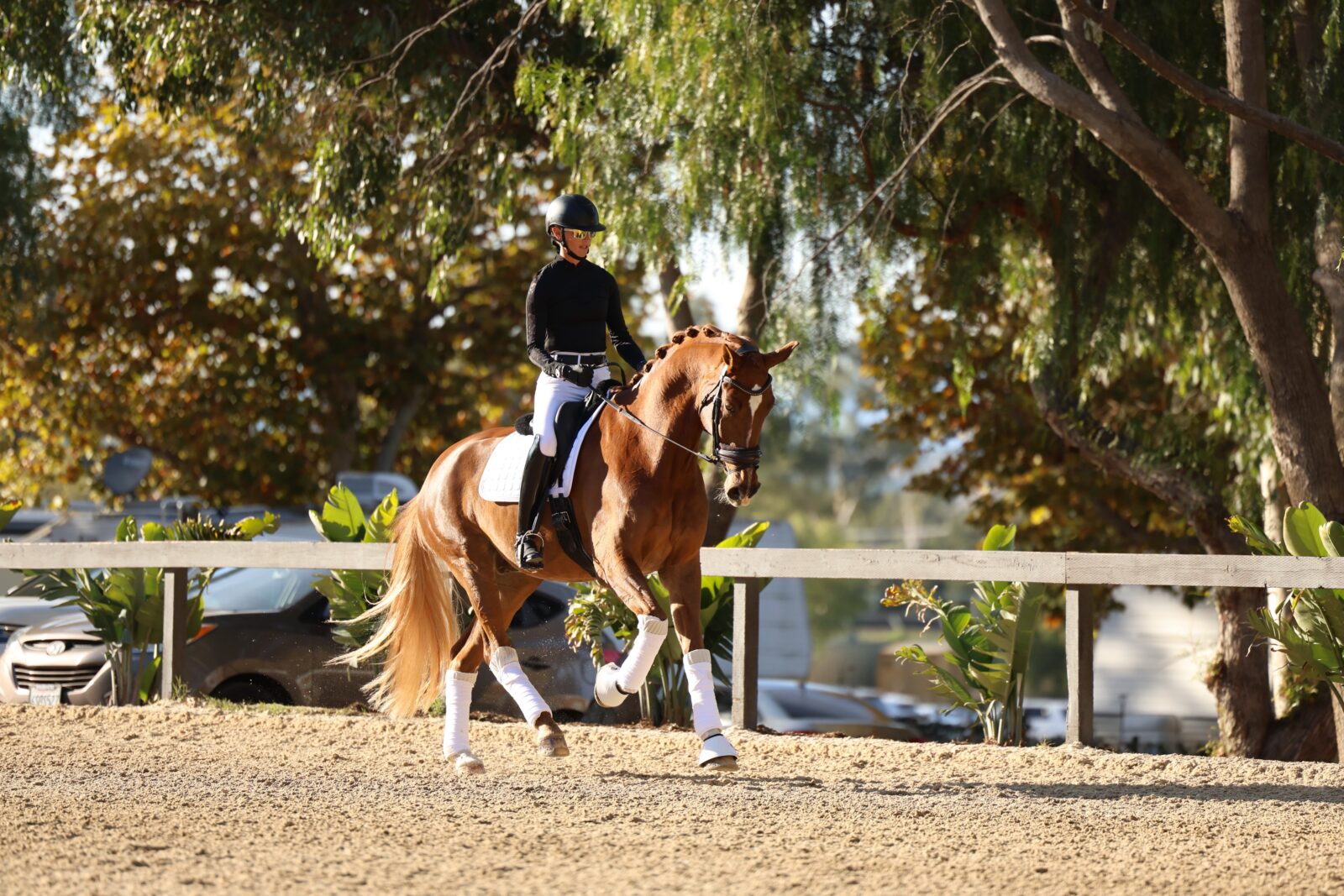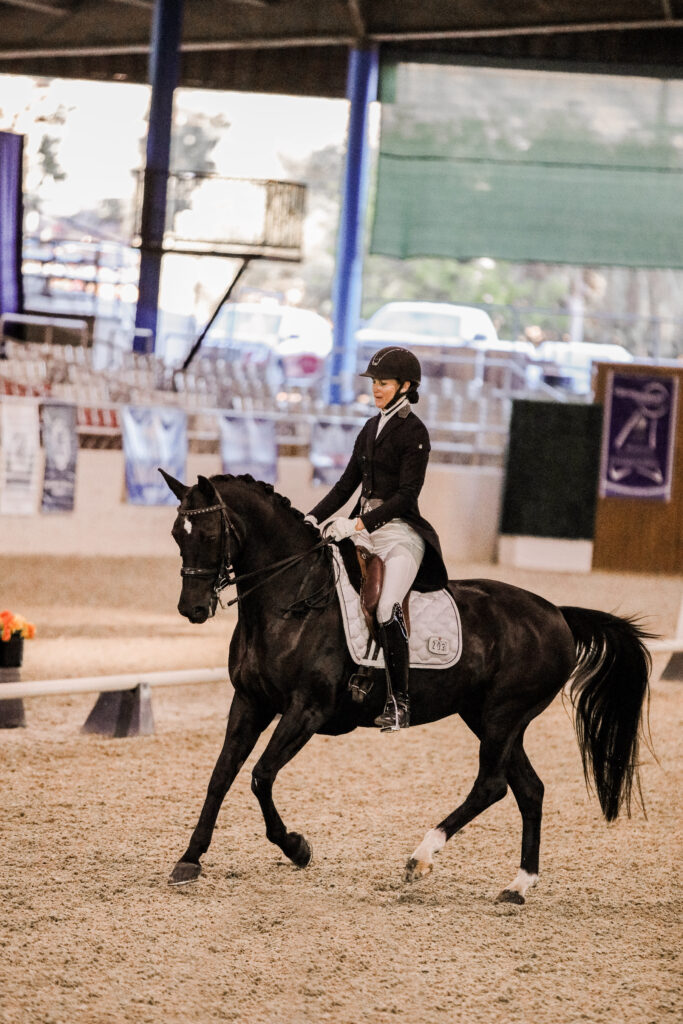AMA: Demystifying The Role Of Your “Seat Bones”

Ever had a riding theory question you couldn’t find the answer to? Or don’t have a go-to coach to ask? In this recurring segment, Amelia Newcomb is here to answer anything about your riding and dressage needs.
I’m trying to be more aware of my ‘seat bones’ and how they are connecting me to my horse in the saddle. Any advice on what I should be paying attention to or trying to do to be more aware of them and their role in my riding?
Correct alignment and seat bones placement is a key basic for every rider regardless of discipline. Good for you for taking notice of this element and seeking advice.
When we talk about ‘engaging our seat bones’ or ‘aligning our seat bones’ etc it can get confusing really fast. In the simplest terms, we want to find the correct balance in our pelvis to support both spinal symmetry and the shoulder-hip-heel line. This means that we have even weight and balance from left to right AND from forward to back. If you don’t have the sweet spot it will affect your ability to have an independent seat, be in balance with your horse, correctly feel the movement of your horse, have accurate application and timing of your aids, and more!
Let’s break it down into two parts: Lateral balance for Spinal Symmetry. And Longitudinal balance for shoulder-hip-heel stability.
Lateral balance for Spinal Symmetry
This means that you want to have even weight in your left and right seat bone through gaits, transitions, turns, and movements. At times during specific lateral work, we have slightly more weight in one seat bone versus the other, but you don’t want that weighting to cause leaning or collapsing.
- Exercise: Take note of your riding, if you lean or collapse more to one side, take your reins in the opposite hand, and raise the hand of the side you collapse/lean on and raise it to the sky like you’re holding a pizza above your head. This will help you straighten your symmetry and get your muscle memory resetting.
Longitudinal balance for shoulder-hip-heel stability
When we ride, we want our spine to be in neutral spine, meaning that our pelvis is straight up and down, with the seat bones going straight up and down in the saddle. Often times our pelvis will tip back, with us sitting more on our back pockets, this creates a posterior pelvic tilt and we go into a chair seat. The other way, is an anterior pelvic tip, which is the rider sitting too far on their crutch and we lean forward too much.
- Exercise: When sitting in the saddle (or in a chair) put your hands under your pelvic center, and tilt your pelvis forward and back into anterior and posterior tilt. Exaggerating the movement and feel in your hands as your seat bones disappear and reappear. When you can feel them straight up and down, that’s when you’re in neutral spine and in the correct alignment.

The key is to get BOTH of these elements at the same time not just statically but also in dynamic movement in each gait. Work at it bit by bit, and it will come, it takes years to develop your seat. If you want more help with your position, check out my Rider Position Transformation Course here.
Amelia Newcomb is a USDF Gold medalist. Based in Somis, California, she incorporates complete dressage training from starting the young horse through the FEI levels in both her in person and online programs. Amelia works to develop a trusting and confident relationship between horse and rider. Her approach incorporates all aspects of horsemanship from basic groundwork to advanced dressage movements. Amelia’s mantra has always been “Dressage for All”, which is evident in both her in person and online coaching. With a successful YouTube video library of hundreds of free educational videos, over 220,000 subscribers (and counting!), and thousands of students enrolled in her online USDF accredited courses.


